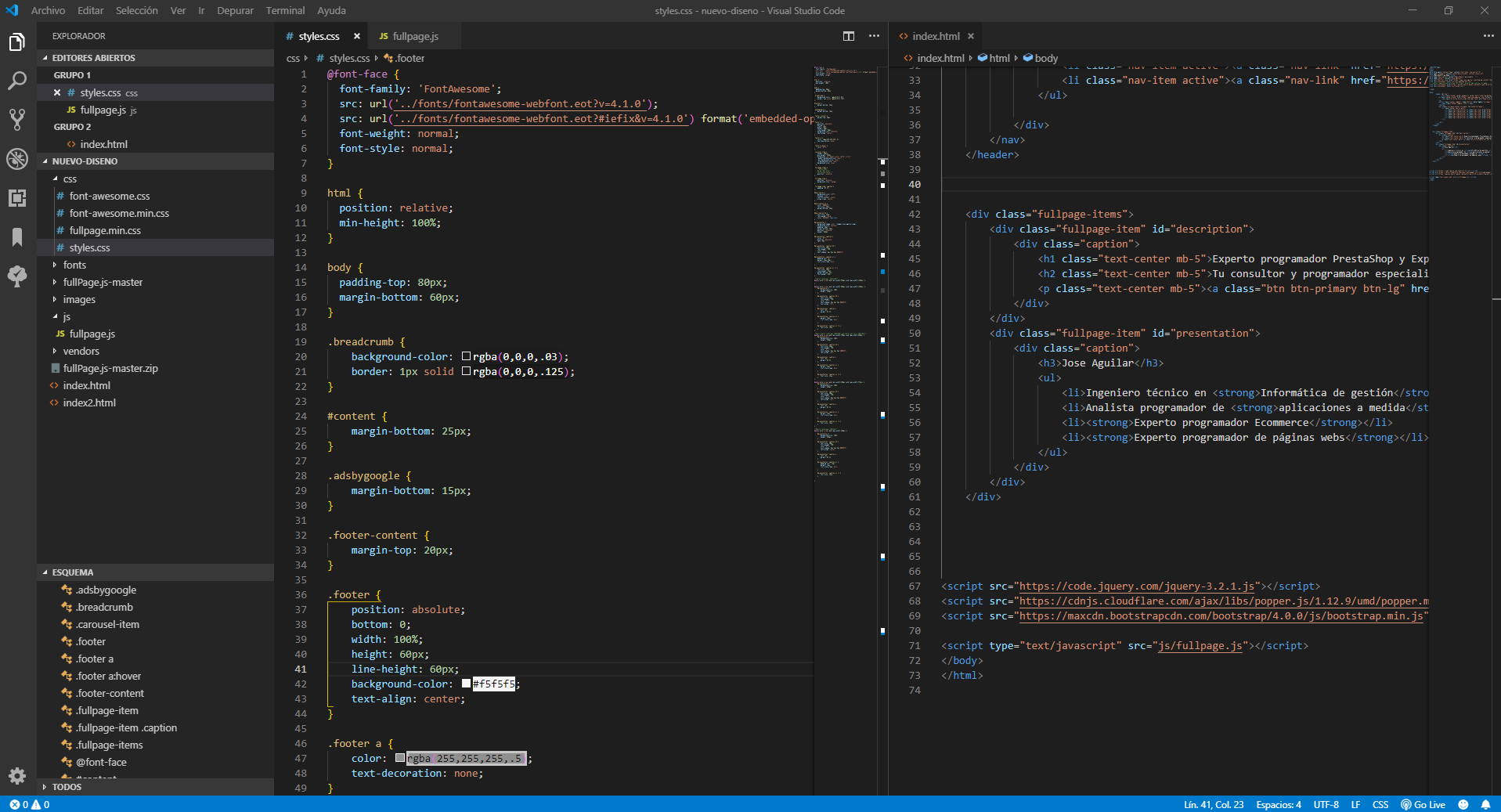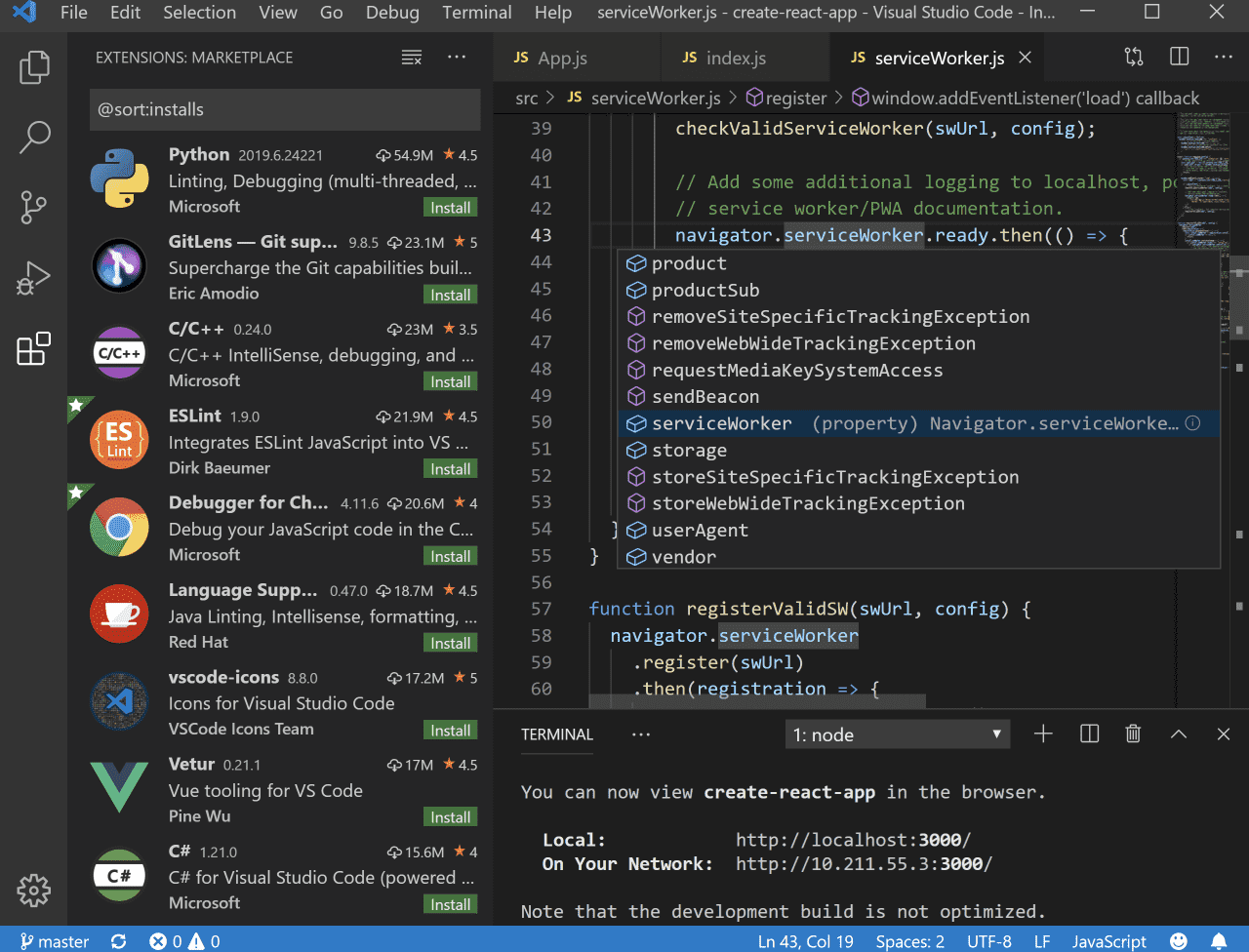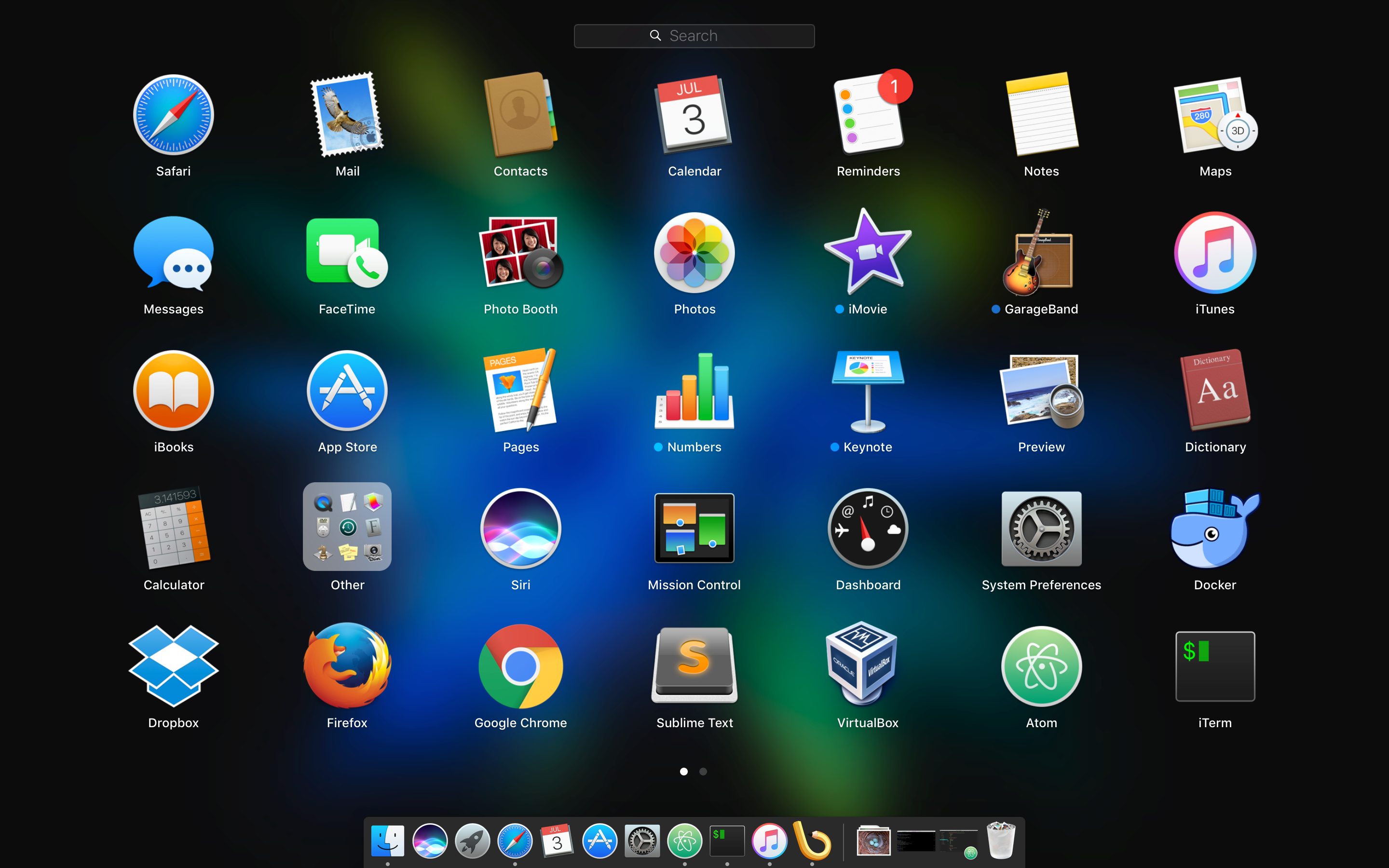I edit my Ansible configuration, which resides in a GitHub repository, with Visual Studio Code. When searching for ansible in the extensions tab a lot of smaller single purpose extension show up and one extension just called Ansible published by Microsoft itself. Since Visual Studio Code is from Microsoft and they should have the resources to develop such an extension, I installed it immediately two years ago when I started using vscode for my Ansible development. It has syntax highlighting, basic YAML validation and some code snippets. But since then, nothing happened, the extensions seems to be abandoned.
Last month when installing vscode on my new computer I searched for an alternative but could not find one directly. Then I came across Red Hat's YAML extension and thought to myself at least I would get better YAML validation. But this extension does much more. It includes schema validation support from https://www.schemastore.org/ and it just so happens that Ansible Roles / Playbooks and other stuff is includes in the schema store.
Ansible Role: Visual Studio Code Role to install the Visual Studio Code IDE / text editor. Visual-studio-code ansible. Follow edited May 30 '20 at 10:23. 24k 7 7 gold badges 55 55 silver badges 77 77 bronze badges. Asked May 30 '20 at 2:34. Mike01010 mike01010. 3,962 4 4 gold badges 34 34 silver badges 65 65 bronze badges.
So now I get solid YAML validation which already found dozens of errors in my syntax that the Ansible extension just overlooked and I also get great Ansible validation and I can hover over options to get short explanations of its usage.

I encountered one or two errors in the extension or more specific in the schema from the schema store, where the validation tells me I'm using the wrong type, but this should only be a matter of time, before the already opened Issue fixes the schema.
Lastly the extension also offers YAML format on save support which is always nice to have.
Update 22.02.2021: The Twitter user and Redhat employee https://twitter.com/sbarneapointed me to a new Ansible extension he is currently developing and just released the first version of. Next to YAML verification, it also integrates with ansibe-lint. Currently there ist no WSL Support which I would need, but it looks promising. Check it out here:
To make it easier for you to perform the tasks described in this workshop, we provide an Visual Studio Code Server for you. This web based IDE allows you to write and edit your Ansible Playbooks and execute command with the built-in Terminal. This part of the Workshop documentation will give you a very quick introduction.
Tested platforms
There are probably thousands of combinations of Operating Systems and Web Browsers, and we couldn’t test them all. We noticed it works best with Google Chrome (or Chromium) on Linux, Windows or Mac. We ran into issues with Copy & Paste with Firefox and Edge on Windows 10. There might be other issues with other combinations, which is why we recommend to use Chrome/Chromium if you run into problems.
Visual Studio Code Ansible Project Tutorial
How to login
Each students has it’s dedicated lab environment. This also means you have your dedicated instance of Visual Studio Code Server. The URL to open the Web Interface is:
Replace <N> with your student number and <LABID>. You will find your LABID in the invite to this event. If you don’t know your LABID, ask your instructor.
After opening the URL, you will see a dialog asking for your password. The password was provided to you in the Lab instructions or the invite to this event.


If the password was entered correctly, you will see a web page like this:
UI Basics
On the very left you will see a column of Icons to switch the UI into different modes. During this workshop you will only need the Explorer mode indicated by the two paper icon.
On the upper right you should see a large window with a VS Code Welcome message. When you will start working with files, this will show the file you are working on.
Finally in the lower right you can enable a Terminal session. If you can’t see the terminal view, click on Terminal and New Terminal in the menu navigation on the top.
As usual, you have a menu bar on the top and you can resize the three parts of the UI by moving the dividers.
How to use the Terminal
You can execute commands on the Linux command line by using the terminal mode. It’s usually shown on the lower right part of the UI. If you can’t see the terminal view, click on Terminal and New Terminal in the menu navigation on the top.
The terminal is running on your “control node” or “ansible” node - this is how we call this instance in the Workshop Guide.
It’s a fully functional terminal with all the features you would expect from Linux. So, yes, you can break and destroy your instance if you try hard enough.
We noticed issues with Copy & Paste. On Linux the best way to paste text is to click the middle mouse button. On Windows 10 in our testing it only worked with Chrome and not with Firefox nor Edge.
How to create and edit files
There are several tasks in the workshop where you will be asked to create and edit files. You can create new files easily by clicking on File, New File. You can also save your files. Pay attention to the lab instructions since you are working in different directories during your lab exercises.
By clicking on the Explorer Mode icon (the two paper sheets in the button column on the far left) you can enable and disable a folder tree, which might help you to navigate between different files and folders.
Visual Studio Code Vs Visual Studio
Gotchas
Runs best on Chrome
Visual Studio Code Server should work well with all modern browsers like Firefox or Chrome. Due to limited resources we did not test all possible combinations. If you run into issues we recommend to use Google Chrome or Chromium.
If you don’t have Chrome installed, it is available here.

Visual Studio Code Ansible Code

Copy & Paste and general performance
Please also keep in mind that the lab is running in the cloud. Sometimes performance is degraded due to high latency. This became particularly challenging when you try to copy & paste something into the editor window. After pressing Ctrl-V to paste, give a few seconds to respond.
Visual Studio Code Ansible 2017
In Chrome, you might have to allow paste from clipboard, when you use it the first time.
